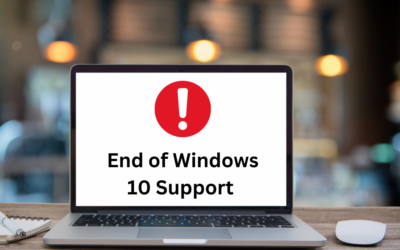For small businesses, particularly those in Monmouth and Ocean County, the security risks don’t always come from the outside. Insider threats, where employees or contractors misuse their authorized access to harm the business, can be just as damaging. Understanding these risks and taking steps to mitigate them is crucial for maintaining the security and integrity of your organization.
Identifying Insider Threats
Insider threats can manifest in several ways, from accidental data breaches caused by careless behavior to deliberate acts of theft or sabotage. Here are some common indicators:
- Unusual Access Patterns: Employees accessing systems or information irrelevant to their roles, especially at odd hours, can indicate potential issues.
- Data Movement: Large data transfers or files being copied to external drives without a clear business need can be a red flag.
- Policy Violations: Frequent violations of company policies, particularly related to IT and security, might suggest a disregard for organizational norms and protocols.
Preventative Measures
To effectively mitigate insider threats, small businesses should consider implementing the following strategies:
- Comprehensive Policies and Procedures: Establish clear, documented policies concerning data access, security protocols, and behavior guidelines. Make sure these policies are accessible and understood by all employees.
- Restrict Access: Implement the principle of least privilege (PoLP) by ensuring employees have access only to the information and resources necessary to perform their job functions. Regularly review and adjust these access privileges as roles or responsibilities evolve.
- Regular Training: Conduct regular training sessions on cybersecurity best practices and the importance of data security. Employees should be aware of how their actions can impact the organization’s security and be trained to recognize signs of phishing, scams, and other security threats.
- Monitor and Audit: Use monitoring tools to track unusual activity across your network and audit logs regularly. This can help you catch potentially malicious activities early before they cause significant damage.
- Incident Response Plan: Develop and maintain an incident response plan that includes protocols for dealing with insider threats. This should outline the steps to follow when a threat is detected, who to contact, and how to contain the threat.
Response Strategies
When an insider threat is identified, responding swiftly and effectively is crucial. This includes:
- Containment: Immediately contain the threat by disabling the insider’s access to your network and securing all systems they could affect.
- Investigation: Conduct a thorough investigation to understand the breadth of the issue. Determine if data was stolen or compromised and assess the damage.
- Review and Learn: After addressing the immediate threat, review your security policies and controls. Learn from the incident to strengthen your defenses against future threats.
Insider threats pose a significant risk to small businesses in Monmouth and Ocean County, but by understanding and implementing robust preventative measures, you can greatly reduce these risks. Creating a secure, transparent, and supportive work environment is key to protecting your business from the inside out.
For personalized advice and strategies to protect your business from insider threats, consider reaching out to UpTech360, who can provide tailored solutions and ongoing support.
Leveraging Cloud Services to Enhance Business Efficiency Along the Jersey Shore
For businesses operating along the Jersey Shore, leveraging cloud services offers a multitude of benefits that can transform operations. Cloud computing provides scalable resources, improved data...
What Happens To Your Applications When Windows 10 Support Ends – And What It Means For Jersey Shore Businesses
Mark your calendars: October 14, 2025 – the day Microsoft officially ends support for Windows 10. After this date, there will be no more security updates, bug fixes or technical support. But for...
Mobile Device Management for Jersey Shore Businesses: Securing Your On-the-Go Operations
For businesses along the Jersey Shore, the ability to operate seamlessly on the go is crucial, especially when quick responses and real-time updates are essential. Mobile Device Management (MDM) is...


